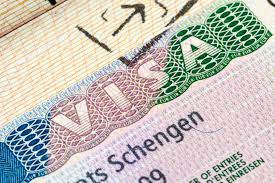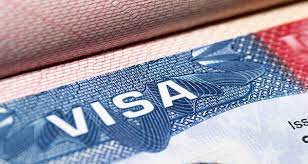The Schengen Visa| How To Apply
The Schengen Visa, widely regarded as one of the most sought-after tourist visas, comes in various forms, typically determined by the number of entries allowed into the Schengen area.
Why the Schengen Visa is Popular: Each year, Europe attracts millions of tourists from around the globe. Consequently, the Schengen visa has gained immense popularity. In the past, travelers needed individual visas for each European country. However, with the Schengen visa, tourists can explore 26 different European nations with just one visa.
Understanding the Schengen Visa: The Schengen visa facilitates unrestricted travel within the Schengen Area, a coalition of 26 European countries that have abolished internal border controls, including passport checks.
Countries in the Schengen Area: The Schengen Area encompasses a diverse range of countries, including Austria, Belgium, Czech Republic, Denmark, Estonia, Finland, France, Germany, Greece, Hungary, Iceland, Italy, Latvia, Liechtenstein, Lithuania, Luxembourg, Malta, Netherlands, Norway, Poland, Portugal, Slovakia, Slovenia, Spain, Sweden, and Switzerland.
Purpose and Duration: This visa is granted to travelers intending to visit one or more Schengen countries for various reasons, such as tourism, business, or other purposes. It allows stays of up to 90 days within a six-month period, affording the holder the freedom to enter and exit the Schengen Area without constraints during this period.
List Of The Schengen Area Member States |
|
| Austria | Lithuania |
| Belgium | Luxembourg |
| Czech Republic | Malta |
| Denmark | Netherlands |
| Estonia | Norway |
| Finland | Poland |
| France | Portugal |
| Germany | Slovakia |
| Greece | Slovenia |
| Hungary | Spain |
| Iceland | Sweden |
| Italy | Switzerland |
| Latvia | Liechtenstein |
List Of Non-Schengen Countries That Allow The Visa |
||
| Albania | Israel | Saint Vincent and the Grenadines |
| Andorra | Japan | Samoa |
| Antigua and Barbuda | Kiribati | San Marino |
| Argentina | Macau | Serbia |
| Australia | Macedonia | Seychelles |
| Bahamas | Malaysia | Singapore |
| Barbados | Marshall Islands | Solomon Islands |
| Bosnia and Herzegovina | Mauritius | South Korea |
| Brazil | Mexico | Taiwan |
| Brunei | Micronesia | Timor Leste |
| Canada | Moldova | Tonga |
| Chile | Monaco | Trinidad and Tobago |
| Colombia | Montenegro | Tuvalu |
| Costa Rica | New Zealand | Ukraine |
| Dominica | Nicaragua | United Arab Emirates |
| El Salvador | Palau | United States |
| Georgia | Panama | Uruguay |
| Grenada | Paraguay | Vanuatu |
| Guatemala | Peru | Vatican City |
| Honduras | Saint Kitts and Nevis | Venezuela |
| Saint Lucia | ||
Types of Schengen Visas
There are several types of Schengen visas issued based on the purpose of travel and the duration of stay. Here are the main categories:
- Uniform Schengen Visa (USV): This visa permits travel to all Schengen countries for up to 90 days within a six-month period. It is suitable for tourism, business visits, visiting family or friends, or other short-term stays.
- Limited Territorial Validity Visa (LTV): This visa allows travel only to the Schengen country that issued it or to specific Schengen countries specified in the visa. It is granted for specific reasons like humanitarian concerns, national interest, or international obligations.
- National Visa: This type allows stays in a Schengen country for more than 90 days, such as for study, work, or family reunification. It is issued by the specific Schengen country of stay.
- Transit Visa: This visa permits transit through a Schengen country when traveling to a destination outside the Schengen area.
It’s important to note that the requirements and application procedures for each visa type may vary depending on the country of application. It’s advisable to check with the embassy or consulate of the intended destination for specific information.
Difference Between Schengen Visa Validity and Duration of Stay:
The embassy determines the number of days allowed for stay in the Schengen countries and specifies the entry and exit dates, known as the ‘duration of stay’ and ‘visa validity,’ respectively. Typically, the duration of stay is shorter than the visa’s validity period. For instance, a visa might allow a 10-day stay within a validity period from January 1 to January 20. Regardless of the visa’s validity, the individual must leave the Schengen area by the specified end date.
Application Process:
Applying for a Schengen visa involves completing an online or paper application form. Along with the form, applicants must provide a recent passport photograph and the following documents:
- Schengen travel insurance covering at least EUR 30,000.
- Flight itinerary.
- Proof of accommodation.
- Evidence of sustenance. For minor applicants, additional documentation such as birth certificates and parental consent forms are required.
Where to Submit the Application: The visa application should be lodged at the embassy or consulate of the Schengen country to be visited. If visiting multiple Schengen countries, the application can be submitted to the embassy of the first country visited or where the most time will be spent.
Schengen Visa Fee: A non-refundable visa processing fee is applicable, varying based on the visa type and the applicant’s age. Children above 12 and adults typically pay EUR 60 for airport transit visas and visas valid for less than 90 days. Certain categories of applicants, like members of study groups or non-profit organization representatives, may be exempt from the fee.
Photograph Specifications: Photographs submitted with the application must adhere to specific requirements to avoid visa refusal. These include dimensions of 35mm x 45mm, clear and sharp images with the applicant’s face covering 70-80% of the frame, direct gaze at the camera, no obstruction to the eyes, and a neutral facial expression. Headgear is permitted only for religious reasons.






